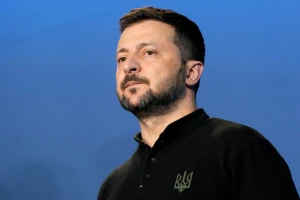
2023 sees record number of Russian artillery destroyed in Ukraine. What happens next?
According to the General Staff of the Armed Forces of Ukraine, the Russian occupation forces have already lost more than 8,100 pieces of artillery in Ukraine. And according to some estimates, Russian troops have at least 4,500 artillery systems in the combat zone in Ukraine
At first glance, Russia's artillery potential seems to be inexhaustible and constantly renewed. But this is only at first glance, Ukrainian military observer and journalist Oleksandr Kovalenko says.
Record months
Several records for the destruction of Russian artillery were set in 2023.
First, it was June, when the Ukrainian Defense Forces eliminated 688 systems, then in August - 691 artillery systems, and in September an absolute record in the modern history of wars and conflicts was set - 947 units!
Never before in the last 30 years of modern history have so many artillery systems been destroyed within a month in a single war/conflict!
From March 2022 to April 2023, an average of 200 artillery systems of the Russian occupation forces were destroyed every month. That is, for 14 months in a row, the Russian military-industrial complex was able to send up to 150 artillery systems to the war zone not just as a zero-cost compensation, but also to accumulate a positive profit. In total, this is up to 2,100 guns.
Over the past six months, 3607 artillery systems have been destroyed. Taking into account the increase in the 14 months prior to the peak of the annihilation, 1507 remain in the negative.
But an important point in all these calculations is the initial indicator of artillery systems with which the Russian forces entered a full-scale war against Ukraine.
As of 23 February 2022, on the eve of the full-scale invasion of Ukraine, the Russian army had about 110 separate divisions, 17 regiments, and 15 brigades. If we take into account artillery systems from 100 mm, then at least 3,100 guns.
The basis was the units of the Western Military District, the predominant part of which was the most modern Msta-S self-propelled artillery systems in the Russian army, which had been in service for more than thirty years. At that time, the Southern Military District represented what all Russian artillery was turning into - towed howitzers.
And now the most interesting thing: what do the Russian forces have today?
Russian potential
Russian troops inherited from the USSR a wide range of artillery systems, numbering in the tens of thousands of units, and at first glance it seems that this stock is simply inexhaustible. But in reality, this is not entirely true.
First, Russia currently lacks a full-fledged mass production of artillery barrels.
At present, the vast majority of Russian artillery in the combat zone is made up of artillery that has been removed from storage, restored and sent to war.
Most of it is towed howitzers, as they are much easier, faster and more capable of being restored.
In turn, the share of self-propelled guns is decreasing, which affects the quality of fire, mobility, and counter-battery combat.
Still, what is Russia's estimated artillery capability today?
- D-20 (152-mm) - about 100 (about 1,000 in storage)
- D-30 (122-mm) - about 450 (about 4 thousand in storage)
- Msta-B (152-mm) - about 450 (about 550 in storage)
- 2A36 Giatsint-B(152-mm) - about 100 (in storage about 1 thousand)
- 2S1 Gvozdika (122-mm) - about 400 (about 1.2 thousand in storage)
- Acacia 2C3 (152-mm) - about 700 (about 800 in storage)
- 2S5 Giatsint-s (152-mm) - about 150 (in storage about 500)
- MSTA-S 2S19 (152-mm) - about 400 (in storage about 150)
- SAM Pion 2S7 (203-mm) - about 100 (in storage about 100)
- SAMU Nona-S 2S9 (120-mm) - about 300 (in storage about 500)
- SAMU Nona-SVK 2C23 (120-mm) - about 30 (in stock 0)
- 2S4 Tyulpan (240-mm) - about 30 (150 in storage)
This means that the Russian army has roughly the same number of guns in stock as it has destroyed since 2022. But there is a nuance: there is quantity, but no quality.
The lack of a standardized 152mm ammunition is also a problem. Few people know, but the towed 2A36 Giatsint-B 152mm howitzer uses a specific split-case round that differs from the 152mm rounds for Msta-S, D-20, etc.
Conclusion
All of the above factors indicate that Russia will still be able to systematically compensate for losses in artillery using Soviet stockpiles at least until 2024, but even these are not infinite. In addition, not all stockpiles can be restored, nor can they be supplied with ammunition.
The Russian artillery potential is now on the verge of exhaustion. If the monthly rate of destruction of Russian cannon artillery remains above 350 units, the Ukrainian army will be able to create an irreversible critical shortage of artillery systems by the end of 2024.
However, to create such conditions, the army needs tools, which depend on stable supplies of everything it needs from international partners. Translated with www.DeepL.com/Translator (free version)
- News














































